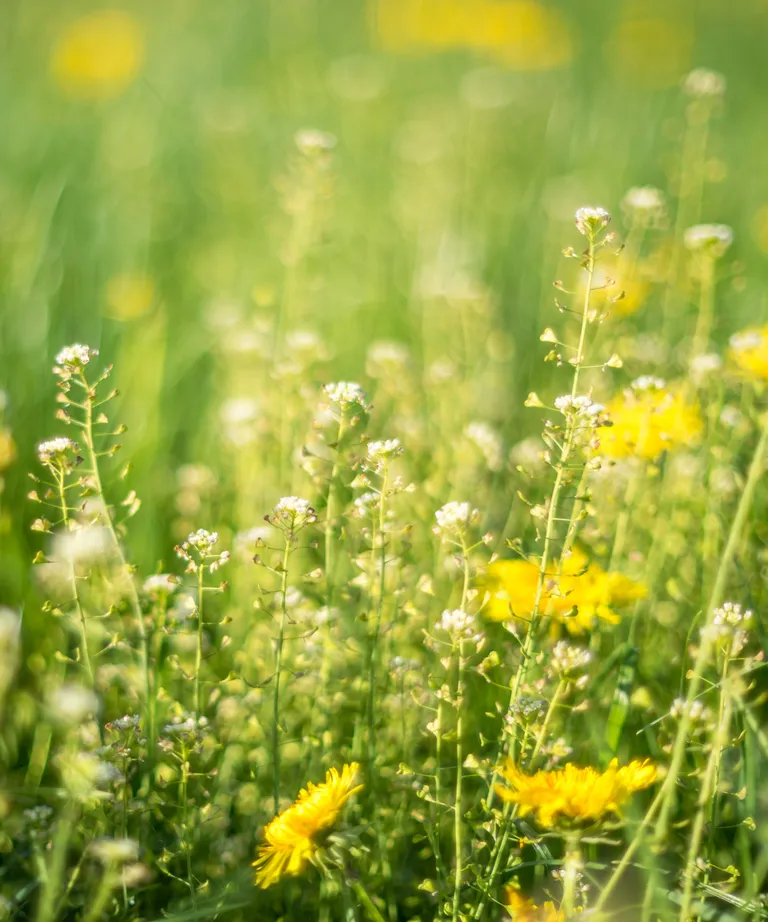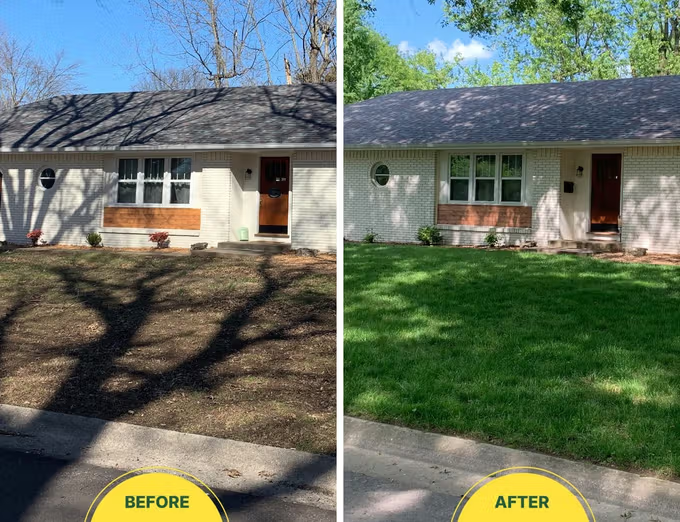Lawn Care Tips for a Greener, Thicker, Healthier Lawn
Last Updated on March 16, 2025 by Duncan
Sadly, there is no magic spell cast that can guarantee a healthy, green lawn, but there are a few easy steps you can take to give your lawn the best chance of thriving.
We have noted a few crucial areas that will give your lawn the best chance of being thick, green, and healthy these coming seasons.
Secret #1: Don’t go fancy
You might want to be different from your neighbors, and there is nothing wrong with this. Unfortunately, this might be counterproductive.
When choosing grass for your lawn, you should avoid a fancy variety that isn’t designed for your area.
The best way out is to go for grass that is native, local, and perfectly adapted to your climate.
When making the purchase, take time to understand the ideal growing conditions, temperature, and soil type for the grass.
When you have easy-to-maintain grass, you will have an easy time creating the lawn of your dreams.
Some of the popular grass varieties for you to choose from include: Bahia, Bermuda Bluegrass, Centipede, Fescue, Zoysia, St. Augustine, and many others.
If you aren’t sure about the best grass variety you should go for, ask a landscaping expert to help you out.
Secret #2: Watch where you plant the grass
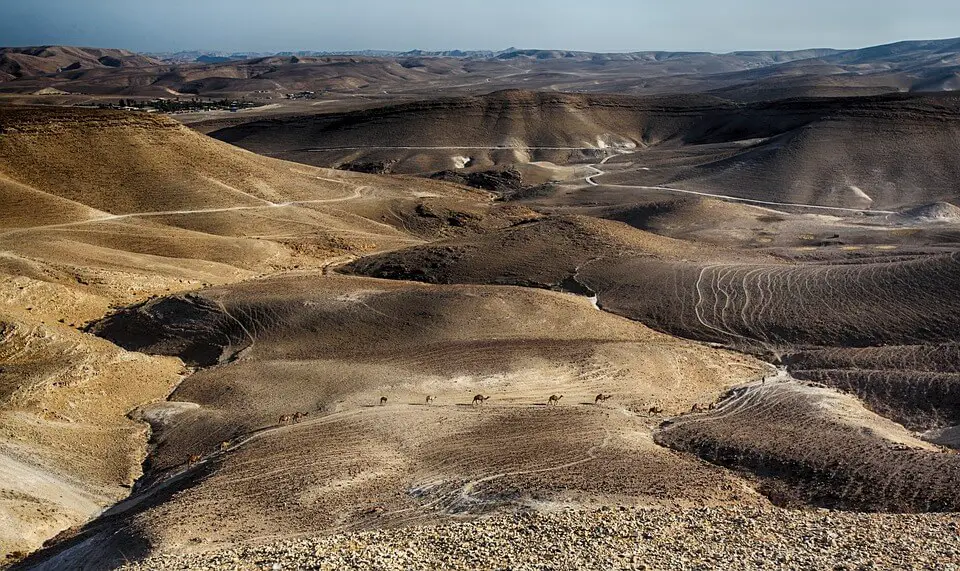 You will buy the right grass variety for your lawn, but you won’t have a great experience with it if you don’t plant it in the right areas.
You will buy the right grass variety for your lawn, but you won’t have a great experience with it if you don’t plant it in the right areas.
As a rule of thumb, avoid planting the grass in a completely shady area. You also should avoid planting on slopes and other areas with plenty of anomalies.
One of the best places to plant the grass is in a slightly shaded area. Grass in a shady area requires less water and fertilizer. This is because it isn’t burnt by a lot of sun.
One of the things you should be cautious about is overwatering or over-fertilizing it as you can easily do it, which, as you might guess, would lead to a damaged lawn.
Secret #3: Properly prepare the soil
Just as you won’t have a great experience planting the grass in the wrong area, you also won’t have a great experience planting on the wrong or poorly prepared soil.
When planting new turf grass, work the compost about 2-3 inches into the soil. If possible, make use of manure-based compost.
This compost is rich in nitrogen which highly encourages green and healthy lawn growth.
You also should consider top dressing your existing lawn with ¼ inch of manure-rich compost.
Secret #4: Get rid of thatch
Thatch is a layer of organic matter that builds up between the leaves and soil. The layer is made up of dead grass, leaves, and root stems.
In addition to it being unsightly to look at, it also tends to block the lawn preventing the moisture and nutrients from penetrating the soil and moving down the roots.
Even if you have long grass, it’s easy to identify a lawn with thatch. It tends to have a spongy feel. The grass in this area also tends to be dull as it lacks the necessary nutrients.
For a green and healthy lawn, you need to remove the thatch using the scarification process. Here you use a rake to get rid of mulch from the lawn.
You can also use a specially made lawn scarifier to get rid of the thatch.
Secret #5: Get rid of mosses
Mosses are nonflowering plants that are one of the primary causes of lawn problems. Mosses thrive in areas with excess moisture, shade, and low-quality turf.
When you don’t remove the moss early enough, you greatly reduce the chances of the grass growing.
For a healthy lawn, you need to remove the moss. You should then continue monitoring the lawn, feed, and scarify it, if necessary.
Secret #6: Aerate the lawn
Lawn aeration allows effective penetration of water and air to the root zone of the grass. The process is a great way of managing dying lawns.
In most cases, these are lawns that are affected by drought and waterlogging.
You undertake lawn aeration by creating small holes in the soil at certain depths and intervals.
You can do this using a garden fork or specially designed tool such as aerating shoes.
The cool thing with lawn aeration is that you don’t need to do it to frequently to have a beautiful lawn.
Doing it once every few years is enough. If you notice ugly-looking areas of the lawn, you don’t have to aerate the entire lawn. You can go ahead and individually treat this area.
Secret #7: Overseed the lawn
Overseeding the lawn comes in handy at rejuvenating tired and worn-out lawn.
To overseed the lawn, you need to cover the entire area with large quantities of seed that has been mixed with fertilizer.
The fertilizer fills up the damaged and thinning areas while at the same time improving the color and reducing the chances of weed and moss coming about.
Before you apply the seeds, you should scarify or aerate the lawn. You also need to mow and water the lawn.
If you have a large yard, you should use spreaders that will help you with the distribution of seeds. You can buy the spreaders or rent them from your local store.
After seeding the lawn, you should keep the area moist to encourage germination.
To protect the seeds and provide them with the nourishment they need, undertake top dressing.
Secret #8: Improve lawn drainage
Lawns with poor drainage tend to be waterlogged for hours and, in some cases, days. This leads to ugly lawns. In some cases, the lawn is too damaged that it dies.
Two of the major causes of poor lawn drainage are poor soil and landscaping.
If your lawn has high levels of clay soil, you have high chances of poor water-absorbing, leading to waterlogging.
Depending on the extent of the problem, you should undertake lawn aeration to improve the flow of water and air hence reducing surface build-up.
You can also adjust the soil using organic materials.
If your garden has a poor shape, you are bound to experience problems with the lawn area. Any dips tend to allow water to pool in one spot leading to grass damage.
You should work at preventing water logging in your garden by fitting gutters and drains that direct the excess rainfall away from your lawn.
If the design of your lawn allows it, you should consider adding wet plants that thrive in a lot of water in the lawn area.
You can also work with a landscaping expert who will help you adjust the gradient of the garden to have better drainage.
Secret #9: Keep Weeds Away
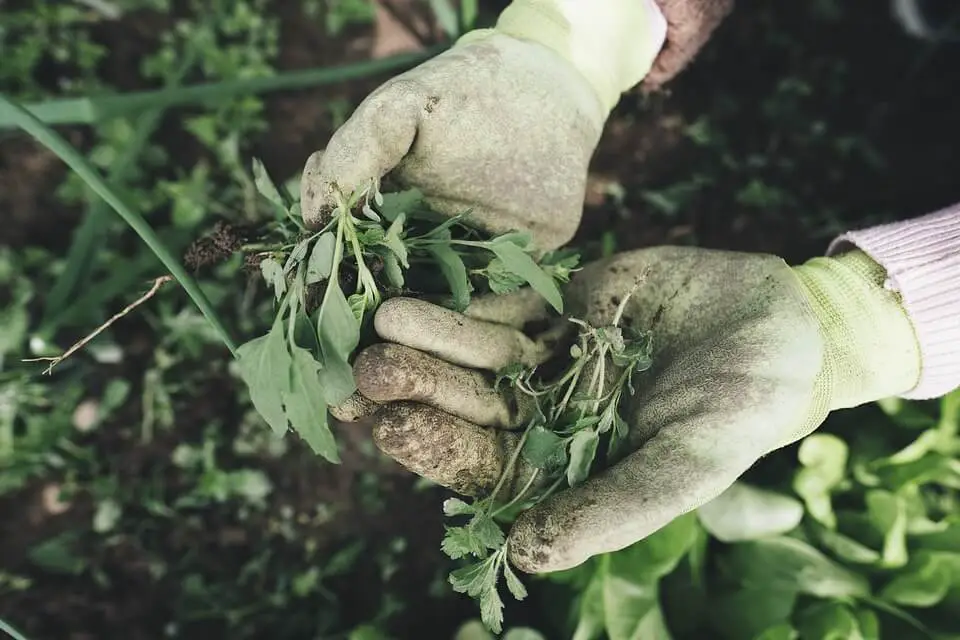 One of the biggest causes of a bad-looking lawn is weeds, which can grow all year round and are hardy survivors.
One of the biggest causes of a bad-looking lawn is weeds, which can grow all year round and are hardy survivors.
Having weeds flourishing in the middle of your lawn is not just unsightly but can cause further damage.
All plants and fauna compete for sunlight and water, the two elements that help most things grow.
Weeds are well known for taking control of their area by having larger leaves that cover your grass and hamper the chances of the lawn growing evenly across the garden.
Use an organic method to eliminate weeds from surrounding borders, such as mulch, vinegar, boiling water, or saltwater.
Keeping your borders weed-free is a big step to removing them from your lawn too.
Secret #10: Be Proactive in Autumn
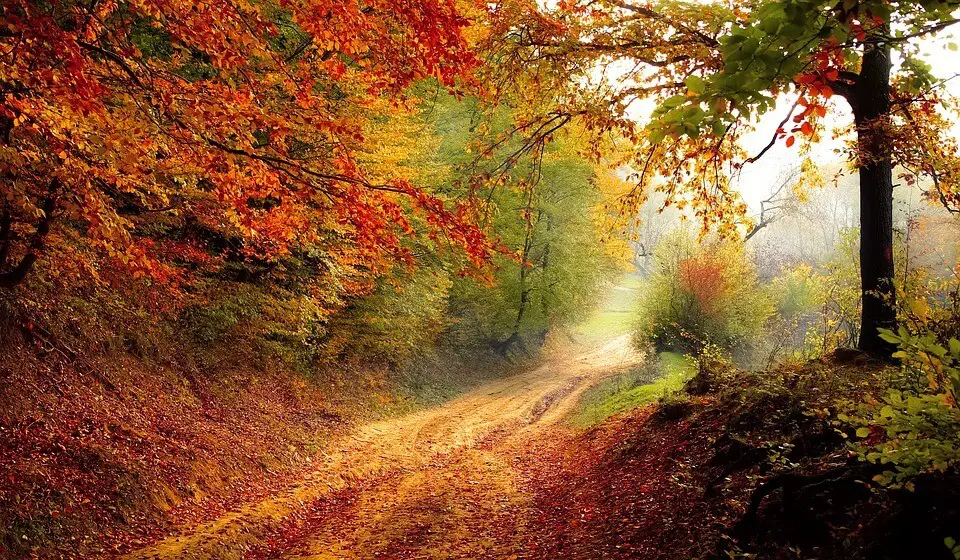 As many of us only use our garden in the summertime, we often leave preparing the lawn until spring, thinking this is enough time to get it right.
As many of us only use our garden in the summertime, we often leave preparing the lawn until spring, thinking this is enough time to get it right.
It is much easier to do a little work all year-round than try to achieve everything in the space of two months.
Although your lawn and garden appear to hibernate in the winter, it is vital to take steps to prepare your lawn for the winter months.
Letting the lawn grow a little longer in the cold seasons will allow the grass to absorb more sunlight, which is limited in colder times.
Many weeds germinate throughout the winter, so continue to check and remove any that you see.
Address any bare patches in the lawn by re-seeding as you don’t want your bare spots to grow.
Try to keep lawn traffic to a minimum and remove debris, including kids’ toys, garden furniture, and dead foliage.
Secret #11: Re-seed as Needed
 When removing weeds, you leave a small space with no grass, and these bare patches will accumulate if you don’t act to prevent them.
When removing weeds, you leave a small space with no grass, and these bare patches will accumulate if you don’t act to prevent them.
Re-seed in spring and autumn to keep the lawn uniform, and this will also slow the rate your weeds will grow.
Check with your local garden center to find the best varieties for the climate you live in, and use a seed thrower to ensure an even spread of seeds.
Grass seeds like moist soil to germinate before they shoot, keep the lawn damp without overwatering.
Birds may be tempted to eat your seeds, but this shouldn’t be an issue if you spread enough around.
You can cover the area with wire fencing to stop birds from eating the seed, but this is not always necessary.
Secret #12: Mow Wisely
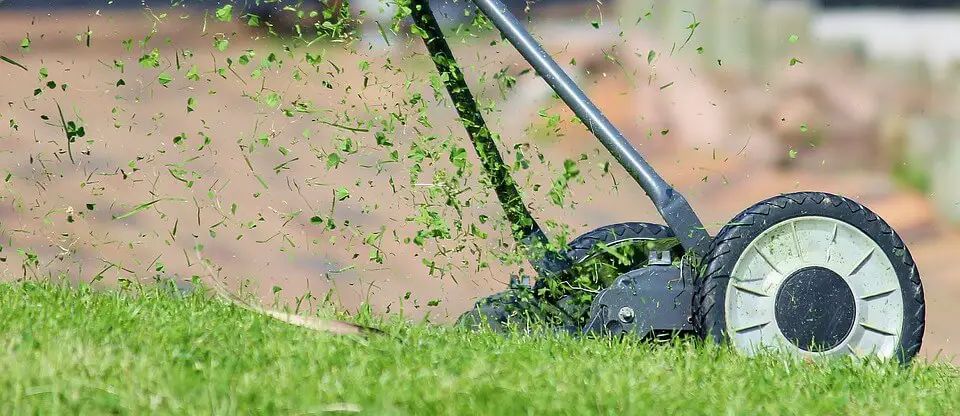 One of the most satisfying aspects of owning (and growing) a lawn comes straight after you have mowed it – that enticing freshness of freshly cut grass.
One of the most satisfying aspects of owning (and growing) a lawn comes straight after you have mowed it – that enticing freshness of freshly cut grass.
The best advice when mowing is to mow regularly but cut a little. You should cut lower to the ground in the summer as having long grass can soon turn dry and brittle, making it look unkempt.
Throughout the winter and colder months, you should mow whenever the chance occurs between rainfalls; keep it longer in the winter to give the grass a chance to catch the light and flourish.
Your mower blades should be kept sharp and clean before each mow so you have clean-cut grass rather than chopped edges which will stump their growth.
The general rule gardeners follow is to cut 1/3 of the length off each time you mow, doing this regularly will help your lawn stay green, thick, and healthy.
To avoid noise-induced hearing loss, make a habit of wearing headphones for mowing. You can also use earplugs or any other form of hearing protection.
Secret #13: Water Regularly
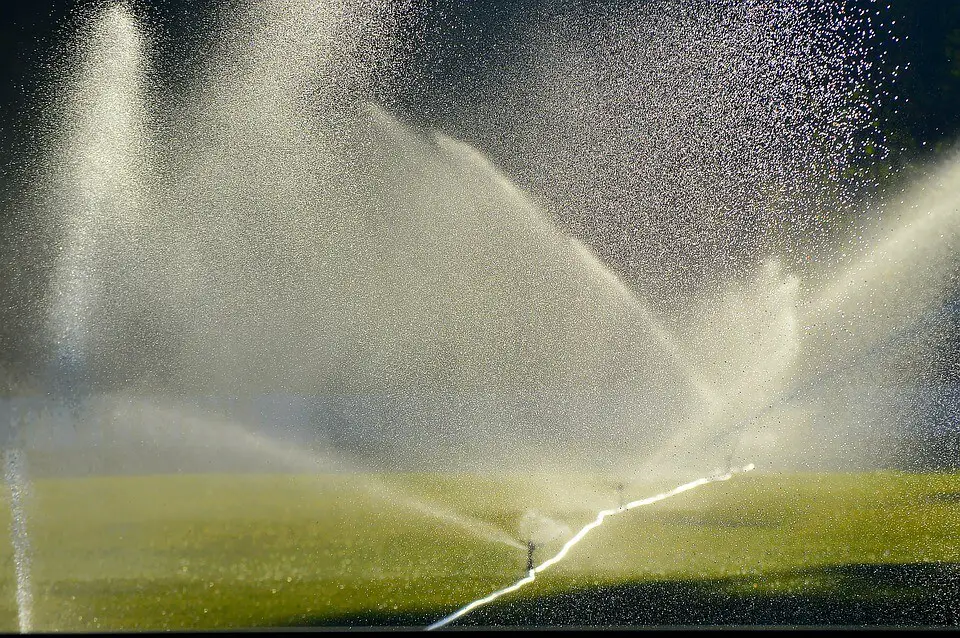 Watering lawns is a contentious issue as we continue to use water, somewhat unnecessarily.
Watering lawns is a contentious issue as we continue to use water, somewhat unnecessarily.
Set up water recuperators to catch any water from gutters and drainpipes and use this when possible to water the lawn.
Never water the lawn in the middle of the day when the sun is at its hottest as you may scorch the grass, try and water early in the day or as the sun is setting to give the water a chance to reach the roots of the grass before evaporating.
The trick to achieving a lush lawn is to water enough so the grass can drink and thrive but not so much as to create puddles as this will hamper the growth.
Bonus Secret
One of the keys to lawn maintenance is to do little, but do it often, as keeping on top of troublesome issues is the best way to having a lawn you want to play and relax on when the weather is right.
